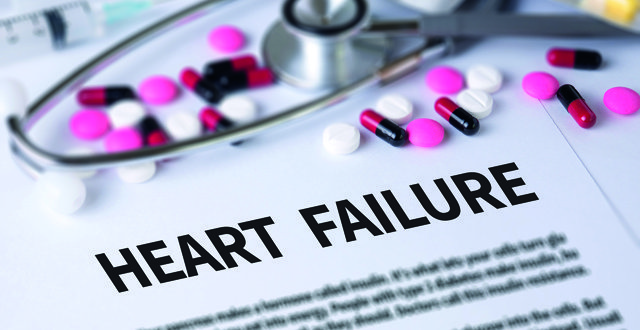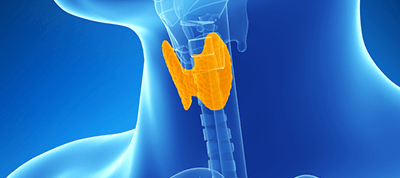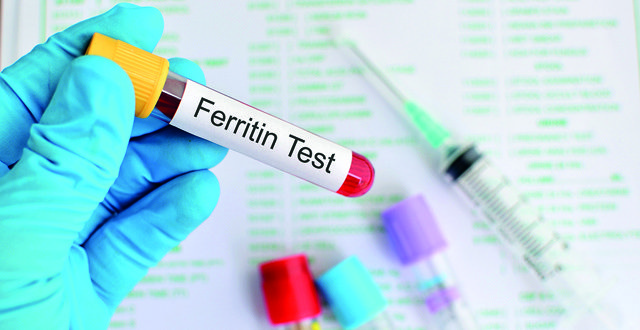Atrial fibrillation (AF) is the most common sustained cardiac arrhythmia. Its prevalence is 0.1-to-4 per cent and is constantly increasing. Furthermore, 70 per cent of AF is asymptomatic, so the actual true prevalence in the community is unknown and is almost certainly underestimated. AF leads to a five-fold increased risk of stroke with worse outcomes and an increased risk of dementia and heart failure. AF is also associated with a two-fold increase in mortality.
Structural and electrophysiological remodelling of the atria are important contributors to the development of AF. There are higher rates of AF with increasing age, but the increasing prevalence is related, not only due to an ageing population, but also to better survival post-myocardial infarction (MI), congenital, valvular heart disease, and the increasing prevalence of hypertension and obesity. Other recognised risks are sick sinus syndrome, viral infections, heart failure, respiratory disease, diabetes, sleep apnoea, thyroid disease, and lifestyle factors, such as excess alcohol, caffeine and cigarettes. There is now also evidence of a familial component for lone AF, which is associated with the KCNQ1 mutation and other polymorphisms on chromosome 4q25.
<h3><strong>Prevention</strong></h3>
A meta-analysis of 3,557 patients enrolled in randomised statin therapy trials showed a 61 per cent reduction in risk of clinically-detected incident AF. In addition, the Atorvastatin for Reduction of Myocardial Dysrhythmia After Cardiac Surgery (ARMYDA-3) trial found that initiation of a statin reduced in-hospital AF in patients after elective cardiac surgery, from 57 per cent (placebo-treated patients) to 35 per cent (Patti G et al). The mechanisms by which statins reduce AF onset are uncertain and diverse mechanisms have been proposed, including anti-inflammatory or antioxidant properties, enhanced endothelial function and reduced neurohormonal activation.
Finally, a meta-analysis of β-blockers in heart failure showed a 27 per cent risk reduction for incident AF. However, no effect of β-blockers on AF as an adverse event was found in the SENIORS study, which included patients aged ≥70 years. It is hypothesised that the lack of efficacy in the SENIORS study suggests there is a finite window in terms of age or comorbidity for a therapeutic impact on the prevention of AF.
Overweight populations have a higher AF incidence, prevalence, severity and progression of AF from paroxysmal to persistent, compared with their normal-weight counterparts.
Obese patients with AF who lose at least 10 per cent of their body weight are six times more likely to achieve long-term freedom from AF compared to those who do not lose weight.
Recent clinical data confirms the hypothesis drawn from epidemiological studies that durable weight reduction strategies facilitate effective management of AF. Stable weight loss decreases AF burden and AF recurrence following treatment. Structural remodelling in response to weight loss suggests that it is the reverse remodelling of the AF substrate that mediates improvement of arrhythmia profile.
Developments in non-invasive imaging techniques such as cardiac MRI are now capable of detecting and tracking atrial fibrosis, providing new insights into the pathogenesis of AF and may enable us to better select appropriate interventions and monitor the effect of these in reducing or preventing AF.
<h3><strong>Detection</strong></h3>
Though some individuals may complain of palpitations, dizziness or dyspnoea, much AF is ‘silent’. Recent data collected from pacemakers, loop recorders and Holter monitors show that even short episodes of AF, of less than one hour, convey an increased risk of stroke. Recent studies have highlighted the variability in the density of which patients are in AF during any specific time period, some experiencing almost daily short episodes, and others experiencing far more prolonged episodes, but infrequently. The difficulty in diagnosing such cases will necessarily improve with opportunistic screening with regular pulse checks, more prolonged monitoring or loop recorder insertion.
<strong><em>Therapeutic principles</em></strong>
Treat reversible causes, such as thyroid disease and excess alcohol.
Optimal management of cardiovascular risk factors, in particular obesity and hypertension.
Treat symptoms.
Prevent stroke.
Consider restoration of sinus rhythm or ensure adequate rate control.
Prevent heart failure.
<h3><strong>Treating AF</strong></h3>
<strong><em>Rate versus rhythm control</em></strong>
The results of the AFFIRM study (Atrial Fibrillation Follow-up Investigation of Rhythm Management) enrolled over 4,000 patients (mean age 70 years) with predominantly persistent AF, with at least one risk factor for stroke. At follow-up, sinus rhythm was achieved in 60 per cent of patients in the rhythm arm, whereas satisfactory rate control was achieved in 80 per cent of patients in the rate control arm. All-cause mortality, the primary end-point, was not significantly different between the two groups, although there was a trend favouring rate control.
There were also no differences in secondary end-points, including stroke rate, quality-of-life or functional status and, although a trend favouring rate control was once again noted, anticoagulation was discontinued in more patients in the rhythm than in the rate control group. The majority of strokes in both groups occurred in patients with sub-therapeutic levels of anticoagulation, or after warfarin had been stopped. In the pre-defined group of patients who were under the age of 65 years, which accounted for approximately a quarter of patients included in the study, a trend favouring rhythm control was noted.
These results suggest that, at least in this elderly population of patients with AF and risk factors for stroke or death, rate control is at least as good as rhythm control. However, these conclusions may not be applicable in other patient groups or patients who are unable to tolerate arrhythmia despite reasonable rate control. The results of the AFFIRM study are at odds with a number of further studies, including the DIAMOND (Danish Investigations of Arrhythmia and Mortality ON Dofetilide) sub-study, in which patients (mean age 72 years) with heart failure or recent myocardial infarction and AF were randomised to treatment with dofetilide or placebo. In this study, dofetilide was shown to be moderately effective at restoring sinus rhythm, but had no demonstrable effect on mortality.
However, in a multivariate model, restoration of sinus rhythm, regardless of whether this was achieved pharmacologically, spontaneously, or electrically, was associated with a notable reduction in mortality.
<strong><em>Rhythm control</em></strong>
Restoration of sinus rhythm in patients with AF may improve symptoms and cardiac haemodynamics, reverse atrial remodelling associated with continuing arrhythmia, and may reduce the risk of thromboembolism. It has been demonstrated that restoration of sinus rhythm is associated with improvements in exercise capacity.
Since there is an important inverse association between duration of AF and likelihood of successful cardioversion or recurrence of arrhythmia, it is important that attempts to restore sinus rhythm are made as soon as this is possible and safe. For patients who have been in AF for longer than 12-to-24 hours, or in whom the duration of the arrhythmia is not clear, a minimum period of anticoagulation of three weeks is recommended before cardioversion. In cases of haemodynamic compromise or clinical urgency, transoesophageal echocardiography may be performed in an attempt to exclude the presence of atrial thrombus before cardioversion. In such cases, the postprocedural embolic event rate is not as low as patients receiving anticoagulation for three weeks or more before cardioversion.
Furthermore, even if transoesophageal echocardiography has demonstrated no thrombus before cardioversion, patients must be anticoagulated for at least one month after cardioversion, since mechanical atrial function may return slowly after cardioversion.
Pharmacological cardioversion is often possible for the treatment of AF of recent onset. In patients with no structural heart disease, flecainide, ibutilide, propafenone and vernakalant can be used. In patients with structural heart disease, intravenous amiodarone is the drug of choice. Flecainide administered intravenously in patients with AF of recent onset has been shown to restore sinus rhythm in 72-to-95 per cent of patients, with the greatest success rates in patients who receive treatment within 24 hours of AF onset.
Pharmacological cardioversion is much less likely to be effective when AF has persisted for more than 48 hours. Amiodarone appears to be the most effective agent for restoring sinus rhythm in patients with persistent AF, with one small study demonstrating sinus rhythm restoration in 44 per cent and 68 per cent of patients at two days and nine months, respectively.
Electrical cardioversion has success rates between 65-to-90 per cent and can be performed safely as a day case procedure. The likelihood of success can be further improved by the co-administration of antiarrhythmic drug therapy.
<strong><em>Maintenance antiarrhythmic therapy</em></strong>
Flecainide was shown to have some benefit as a short-term agent to maintain sinus rhythm in patients with no significant heart disease. Amiodarone is a successful drug for maintaining sinus rhythm but can have significant side-effects, particularly when used in the long-term. Dronedarone, a benzofuran derivative related to amiodarone, has also been shown to be successful in maintaining sinus rhythm, with a reduction in cardiovascular mortality and stroke (ATHENA). Unfortunately, in patients with persistent AF, the PALLAS study demonstrated an increased mortality. Furthermore, in the Andromeda study, there was also evidence of worse outcomes in patients with heart failure. In view of this, dronedarone is not recommended in permanent AF or those with class III and IV heart failure.
<h3><strong>Anticoagulation</strong></h3>
Cardioembolic events cause 20 per cent of strokes every year. They are largely preventable but there is a high recurrence rate; over 90 per cent originate in the left atrial appendage (LAA) and they cause more severe strokes, with worse outcomes. Anticoagulation leads to a 65-to-70 per cent reduction in AF-related strokes and may prevent over 50,000 strokes a year. AF increases the risk of stroke and the risk increases with increasing age, hypertension, heart failure, diabetes, cardiovascular disease and previous stroke. This has led to the development of the CHA2DS2-Vasc score (Congestive heart failure/left ventricular dysfunction, Hypertension, Age ≥75 [doubled], Diabetes, Stroke [doubled] — Vascular disease, Age 65-to-74, and Overweight populations have a higher AF incidence, prevalence, severity, and progression of AF from paroxysmal to persistent, compared with their normal-weight counterparts, and Sex category (female)), aiding in risk-stratifying those patients who would benefit from anticoagulation.
The score is a guide to the utility of anticoagulation and each decision to initiate and maintain anticoagulation should be made on an individual patient basis, taking into account the comorbidities and the bleeding risk, etc.
Traditionally, anticoagulation has been with warfarin but over the last decade the development of novel oral anticoagulants (NOACs), also called direct oral anticoagulants (DOACs), has revolutionised anticoagulation. Warfarin has a narrow therapeutic range with multiple dietary interactions. With the newer agents, there are fewer dietary and drug interactions, with less need for monitoring. NOACs are at least as effective or superior to warfarin for stroke prevention in patients with non-valvular AF, and are at least as safe or safer in terms of bleeding risk, according to three large trials. Meta-analyses of these trials have shown that, compared with warfarin therapy, NOACs reduced total mortality, cardiovascular mortality and intracranial bleeding, and there was a trend toward less overall bleeding. Practical advantages of NOACs over warfarin include fixed once- or twice-daily oral dosing without the need for coagulation monitoring, and fewer known or defined drug or food interactions. Potential drawbacks of NOACs include a risk of bleeding that might be increased in patients older than 75 years, the lack of a routine laboratory test to reliably measure anticoagulant effect and previously, the lack of an antidote for reversal. Though there are no direct comparisons of NOACs in randomised, controlled trials, a Danish nationwide cohort study showed that in patients with a CA2DS2-Vasc score of >1, apixaban and dabigatran were superior to warfarin and if the score was over 2, rivaroxaban, apixaban and dabigatran were all superior to warfarin. Furthermore, outcome data and subgroup analyses indicate that the treatment benefit of apixaban and edoxaban over warfarin is maintained in elderly patients (aged ≥75 years), those with body weight ≤60kg, and those at increased risk of falls.
Therefore, the choice of NOAC is influenced by individual patient characteristics, including risk of stroke or venous thromboembolism (VTE), risk of bleeding and comorbidity, in particular renal dysfunction. It is recommended that one of the bleeding risk scores, such as the HAS-BLED score, be used to help risk-stratify patients. The choice of agent should be made with knowledge of the patient’s age, weight and creatinine clearance, as there may be a dose adjustment required.
<strong><em>Reversal of NOACs</em></strong>
Until recently, there have been no antidotes for bleeding related to the NOACs and management is supportive, given these drugs have a relatively short half-life. There has been some benefit shown for the use of prothrombin complex concentrates for the reversal of rivaroxaban. Specific agents to reverse the NOACs are now being developed. For example, idarucizumab, a humanised monoclonal antibody fragment (Fab) that has a high affinity for binding to dabigatran has been shown to reduce dabigatran-induced bleeding.
Idarucizumab is relatively safe, works within about 45 minutes and provides full reversal for up to 24 hours in most patients. It is also expensive. For reversal of other NOACs in cases of life-threatening bleeding, a four-factor prothrombin complex concentrate (PCC) is an option. PCCs contain factors II, VII, IX and X and proteins C and S, along with heparin and human albumin. All increase the risk of thrombosis and are usually reserved for the most critical cases.
Andexanet is designed to reverse factor Xa inhibitors — rivaroxaban, apixaban, edoxaban and enoxaparin — and is undergoing evaluation.
Ciraparantag is a small, synthetic molecule that binds to dabigatran and is a direct Xa inhibitor, which is hypothesised to cause complete reversal, and is also under investigation as an antidote agent.
Future studies will clarify the safety and efficacy of these agents.
<h3><strong>Left atrial appendage (LLA) closure</strong></h3>
The safety and efficacy of LAA closure continues to be studied. Currently, expert consensus is that interventional percutaneous occlusion/closure of LAA has a role in patients with AF and at increased thromboembolic risk who are unable to take long-term anticoagulation with oral anticoagulants, or who prefer to undergo such a procedure rather than continue on anticoagulation.
<h3><strong>Ablation</strong></h3>
Cardiac ablation for the treatment of AF has evolved significantly. There are a range of ablation techniques, mapping systems and energy delivery tools. Two main types of ablation remain in widespread use — radio frequency ablation (heat), and cryotherapy (cold).
Ablation of AF is used to both terminate and prevent the recurrence of symptoms and reduce the burden of drug therapy. Although patients may choose to undergo an ablation instead of drug therapy, the vast majority of patients have used at least one antiarrhythmic drug and experienced side-effects of medical therapy and/or ongoing symptoms.
Ablation is largely used in symptomatic patients with paroxysmal AF, although patients with persistent and long-standing persistent AF and specifically patients with evidence of left ventricular dysfunction related to AF and uncontrolled heart rates may benefit.
Studies of the outcomes of ablation have demonstrated improved symptom control, reduced antiarrhythmic drug usage, improved functional capacity and ejection fraction in heart failure patients.
Success rates for ablation in patients with paroxysmal AF for the elimination of ongoing symptoms and documented episodes at one year range between 70-and-85 per cent. The long-term success of patients with persistent and long-standing persistent AF is lower.
Improvements in ablation procedures continue to increase success rates and when performed in high-volume centres by experienced operators, it has proven a very useful treatment option for a significant volume of patients with AF.
In conclusion, AF is a common arrhythmia with an associated morbidity and an increased mortality, and as the Irish Heart Foundation is committed to reducing avoidable death and disability, increasing the understanding of the potential causes of AF, improved awareness, detection, prevention and treatment of this common arrhythmia remains one of our goals.
<p class=”referencesonrequestMIstyles”>See <strong>www.irishheart.ie</strong> for more information.










Leave a Reply
You must be logged in to post a comment.